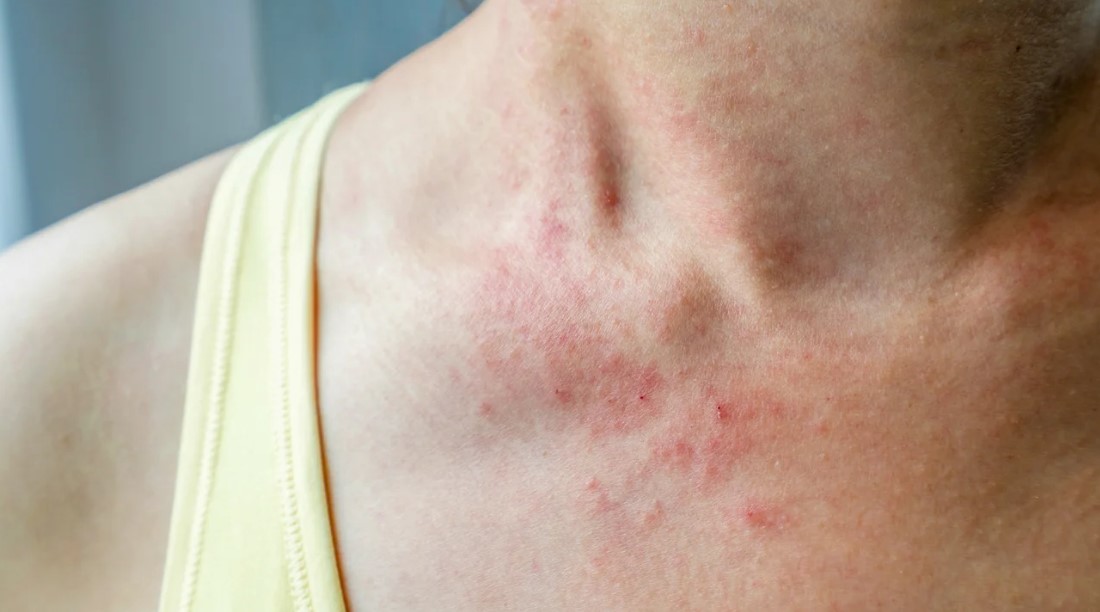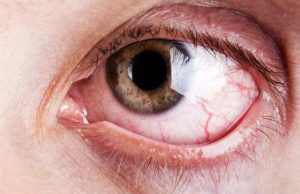
Dust allergies and how to cure the dust allergy
Nowadays, allergy problem is one of the reasons for the daily suffering of most people. Allergies to dust, food allergies, and even some medicines can cause life-threatening complications. There are many other types of allergies! At present, when leaving the house, one has to walk on dusty roads. People come out of the house to eat dust and enter the house again! So, dust allergy is more common than all other allergies. Today we will know about dust allergy.
What are the symptoms?
Constant sneezing

Dust allergy often manifests as constant sneezing, a repetitive expulsion of air through the nose in response to irritants. This symptom is triggered by exposure to dust particles, leading to nasal irritation and an uncontrollable urge to sneeze.
Water starts to flow from the nose

In people with dust allergies, a typical side effect is the beginning of the watery nasal release, frequently alluded to as a runny nose. When exposed to dust particles, the nasal passages become irritated, leading to increased production of clear, thin mucus that flows from the nose.
Eyes itch, become red

People with dust allergies commonly experience itchy and red eyes as a symptom. Openness to clean particles can set off an unfavorably susceptible response, making the eyes become aggravated and kindled. This leads to persistent itching sensations and noticeable redness in the eyes, which can be uncomfortable and bothersome.
The eyes are constantly watering

Constant watering of the eyes is a typical symptom of dust allergies. When exposed to dust particles, the eyes react by producing excessive tears as a protective mechanism. This excessive tear production results in watery eyes, causing discomfort and a persistent need to wipe or dry the eyes.
The nose is blocked

A blocked or congested nose is a common symptom of dust allergies. When presented with tidy particles, the nasal entries become kindled and enlarged, prompting a sensation of nasal blockage or deterrent. This can make breathing through the nose difficult and may require measures to alleviate the blockage.
The nose, mouth, and throat may itch

People with dust allergies frequently experience tingling sensations in the nose, mouth, and throat. Exposure to dust particles can trigger an allergic reaction, leading to irritation in these areas. Itching in these regions may be accompanied by a persistent urge to scratch, causing discomfort and annoyance.
The inside of the mouth, palate, and throat can also itch

Dust allergies can cause itching in the inside of the mouth, palate, and throat. When exposed to dust particles, these areas can become irritated, leading to a bothersome itch. This symptom can be accompanied by a scratchy sensation, urging individuals to alleviate the discomfort by scratching or clearing their throat.
Happily coughing

Coughing is a common symptom of dust allergies, but it is important to note that it is typically not described as "happily coughing." Dust particles can trigger irritation in the respiratory system, leading to bouts of coughing as the body tries to expel the irritants. However, coughing is often perceived as an uncomfortable and unwanted symptom rather than a pleasant experience.
There may be swelling under the eyes

Swelling under the eyes is a potential symptom of dust allergies. When exposed to dust particles, the body releases histamines, leading to inflammation in the delicate skin under the eyes. This can result in puffiness and swelling, commonly referred to as allergic shiners, which can be visually noticeable and contribute to a tired appearance.
In children, there is a tendency to repeatedly rub the nose upwards

In children with dust allergies, a common symptom is a tendency to repeatedly rub the nose upwards, known as the "allergic salute." This action is an instinctive response to relieve itching or discomfort in the nasal passages caused by exposure to dust particles, and it may be observed frequently in affected children.
If one also has asthma or asthma along with allergies, there may be other problems along with the symptoms mentioned above. For example-
May cause shortness of breath

Dust allergies can potentially cause shortness of breath as a symptom. At the point when people with dust allergies breathe in dust particles, it can set off aggravation in the aviation routes, prompting breathing challenges. Windedness, chest snugness, and wheezing can happen, especially in people with previous respiratory circumstances like asthma.
There may be tightness or pain in the chest

Tightness or pain in the chest can be a symptom of dust allergies. In susceptible individuals, exposure to dust particles can lead to inflammation and constriction of the airways, causing discomfort in the chest. This side effect might be joined by trouble breathing, wheezing, or a sensation of weight in the chest.
A whistling or sometimes gurgling sound is heard from the chest during exhalation

A whistling or gurgling sound from the chest during exhalation, known as wheezing, can occur as a symptom of dust allergies. Inflammation and narrowing of the airways due to dust exposure can cause air to pass through them with difficulty, resulting in these characteristic sounds.
Breathe very frequently

Frequent or rapid breathing is not a specific symptom commonly associated with dust allergies. Nonetheless, at times, people with dust allergies might encounter an expanded respiratory rate because of windedness or the body's endeavor to make up for confined aviation routes. In the case of encountering such side effects, counseling medical services proficient for precise finding and suitable management is prudent.
Cough makes it difficult to sleep at night

Coughing associated with dust allergies can make it difficult to sleep at night. The irritation caused by dust particles can trigger persistent coughing fits, disrupting sleep and leading to discomfort. Taking measures to reduce exposure to dust, such as using allergen-proof bedding and maintaining a clean sleeping environment, may help alleviate this symptom.
All the reasons that cause dust allergy
- If someone in the family has a pre-existing allergy problem then the rest of the family may also have it, but remember it is not contagious.
- Young children, asthmatics, and pregnant women can have this type of allergy.
- Dust mites or tiny dust particles or insects float in the air and irritate the nose. Which can cause itching, sneezing, and coughing.
- Allergic reaction is also caused by grass or flower molecules entering the nose.
- Dust mites are more common in humid environments. So, if the environment of the house is polluted, it can cause allergy problems.
Remedies for Dust Allergy
- A mask should always be used when leaving the house
- Household furniture dust should be cleaned regularly
- Every day after waking up and before going to bed, the bed should be dusted thoroughly
- While sweeping the house, the nose and mouth should be covered as well as possible
- Put daily clothes, sheets, pillows, etc. in the hot sun for a few hours
- It is good if you can change bed sheets and pillow covers at least once a week
- Do not keep bookshelves, magazines, or newspapers in the bedroom as they can collect dust easily.
- If you have a dust allergy, it is better not to keep carpets at home
- It is better not to keep furry or feathered animals in the house, these animals contain substances that cause allergies in the body
- Arrangements should be made so that light and air can enter the room
Learn about its treatment
- Certain tests are needed to accurately determine the factor responsible for the allergy. Such as skin allergy tests, blood tests, etc.
- In case of itching, continuous sneezing, red eyes, or watery eyes, some relief can be obtained by taking antihistamine medicine. Stay relaxed, close your eyes, and take some rest.
- Nasal swelling can be reduced by using steroid nasal sprays.
- If the nose is blocked, the nose can be cleaned with saline solution.
- If any allergic problem occurs, it is better not to eat allergic food such as beef, hilsa fish, shrimp, brinjal, etc. It increases the problem of allergies.
- If any part of the skin suddenly becomes red, or itchy, a cold-water bath or cold-water bath provides relief.
Conclusion
Dust allergies can cause a range of symptoms that affect various parts of the body.
These side effects incorporate consistent sniffling, watery eyes, tingling in the nose, mouth, and throat, nasal blockage, tingling and enlarging under the eyes, windedness, chest snugness or agony, wheezing, disturbed rest because of hacking.
Managing dust allergies typically involves minimizing exposure to dust particles and seeking appropriate medical treatment for symptom relief.
What are the symptoms of stomach cancer and who is at higher risk?
Read More Articles
Instagram Twitter Facebook LinkedIn Quora Google News
Our Other Engagements:


https://livewithgreen.com/dust-allergies-and-treatment-for-healthy-life/
.jpg)